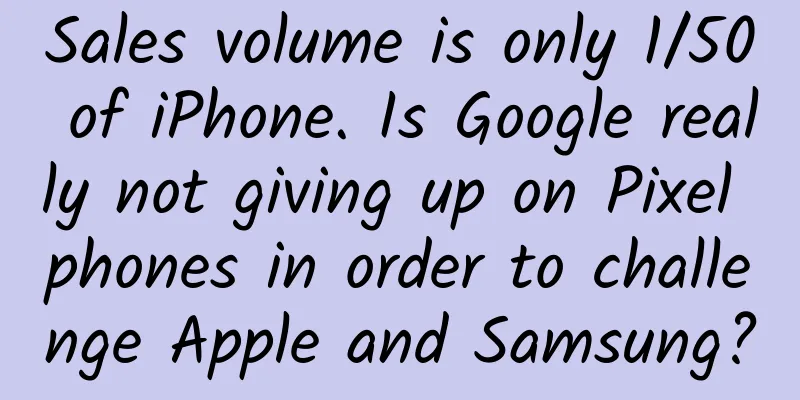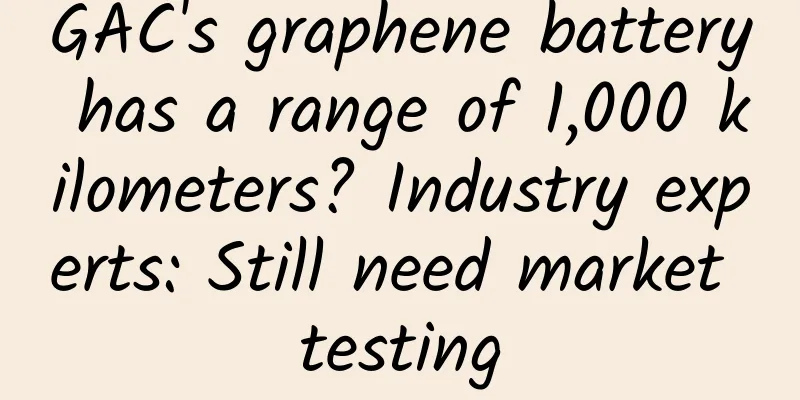Disassembling the core parameters of home projectors, choosing a projector with three-color laser light source in mind

|
There is no doubt that this is the era of the explosion of projectors, with a wide variety of categories emerging. For consumers, the range of choices is indeed wider, but the disadvantage is that the cost of selection has increased exponentially, and you are lost in the various piled-up parameters. But in fact, when choosing a projector, you only need to grasp the most core demand, that is, "projecting good picture quality!" How to quantify the quality of projection images? As a display device, if you want to bring users the best viewing experience, you must always expand based on the core vision and hearing. Therefore, to some extent, it can be said that choosing a projector is actually choosing picture quality. So, how to quantify the quality of projection images? Some people think that the quality of images is completely subjective and cannot be quantified; some people simply and crudely attribute it to the higher the brightness, the clearer it is; and some people think that color is very important and it is best to present "colorful black". Obviously, this is unscientific. To get back to the basics, the quality of a projector's image is not determined by a single indicator, but by the combined effect of multiple image quality parameters, of which five are the most core parameters, namely resolution, brightness, color gamut, contrast, and uniformity. So, what do these parameters actually represent? First of all, let’s look at the resolution, which refers to the number of pixels that can be displayed, measured in pixels (px). Most people should be familiar with it. When buying computers and mobile phones, you will see keywords such as 720P, 2K, and 4K. In fact, it is the digital visualization of resolution. According to the current mainstream standards, 480P is considered standard definition, 720P/1080P is considered high definition, and only 2K/4K can be called ultra-high definition. The higher this value, the richer and more delicate the image quality and picture details provided. Of course, the price will also rise. Therefore, if you want to experience ultra-high-definition picture quality, you need to look for 4K projection. However, in the current "involution" projection market, the 4K resolution projection that once cost tens of thousands of yuan has dropped to the 6K price. Brightness refers to the intensity of light, and the unit is lumen (lm). The higher the brightness, the clearer the image you see, and the less restricted by ambient light. It should be noted that different brands have different standards for marking the brightness of projectors, such as ANSI brightness, ISO lumens, ANSI lumens, etc., and the trend of "false labeling" of brightness is prevalent. However, in February of this year, JMGO Projector took the lead and more than a dozen companies determined a new industry standard - CVIA, which is equivalent to projectors having their own national standard. Contrast refers to the difference in brightness when a projector displays black and white, and the unit is a ratio (:1). The higher the contrast, the more layered the image is, the more distinct the light and dark are, the more details are presented, and the more suitable it is for watching dynamic videos. When projectors are advertised on the market, they are generally not marked. For example, the XGIMI H6 4K does not have this data, while the JMGO N1 series gives a clear data of 1600:1. Color gamut refers to the range of colors that can be displayed. The higher the color gamut, the more colors it can display, and the richer the colors of the picture. In addition, the uniformity of picture brightness refers to the difference between the brightest part of the projected picture and the darkest part of the screen. Therefore, the larger the value of the uniformity of picture brightness, the better. Therefore, the projection image quality is actually a comprehensive quality competition, which is related to hardware, and the above five core image quality parameters are determined by the "light source" and "DMD" chips. However, unlike mobile phones, the importance of chips to projectors is not so critical, and only affects the resolution parameter. In addition, currently only Texas Instruments controls the production and sales of DMD chips on the market. In other words, the chips used in projectors on the market will not differ much. The remaining 80% of the brightness, color gamut, contrast, and uniformity related to image quality are all determined by the light source. Therefore, choosing a projector is actually choosing image quality, and the key to quantifying the quality of projection image lies in the light source! Three-color laser light source, a new turning point in projection technology At present, the light sources used by projectors on the market are divided into three categories: traditional bulbs, LEDs, and lasers. Among them, traditional bulbs are rarely used for home projection due to their shortcomings such as poor color difference and accuracy, short life, severe heat generation and high noise. LED light sources have been the mainstream choice for home projection for a long time due to their cost advantages. However, LED light sources have many defects, such as poor color purity in red, green and blue, which affects the intensity, vividness and saturation of colors, causing the picture to be gray or distorted. However, the biggest bottleneck of LED light sources is still brightness. Its luminous efficiency is close to the peak value. If you want higher brightness, you will inevitably lose color, and there will be many problems such as heat generation, heat dissipation noise caused by high brightness. Laser has always been known as "the purest light that humans can produce". In recent years, it has become a trend to completely replace LED light sources. Lasers are divided into single-color lasers, mixed-color lasers and three-color lasers. Specifically, monochromatic laser generally uses a single blue laser, which has the highest brightness among all light sources. However, since there is only one light source, the green and red are synthesized by the fluorescent wheel, resulting in impure colors. The images that require green and red to be synthesized are prone to distortion. Therefore, the projection using monochromatic laser is like a "student with one subject in mind". Even if the brightness is sufficient, the image appears "dead white". Mixed color laser. Currently, there are two types of projectors on the market that choose this solution, namely monochrome laser "mixed color" and "LED + laser" "mixed light". It seems to be a pleasing approach, but it is essentially monochrome laser. The advantage is that the brightness and color can be made slightly higher than pure LED light sources, but the disadvantage is that it seems to take both into account, but in fact it takes neither into account. Finally, there is the three-color laser. Since the red, green, and blue colors are all very pure, they have the characteristics of high color gamut and high contrast. In addition, the energy efficiency of laser is three times that of LED light source, and the brightness of three-color laser projection is also higher at the same power. Once the three-color laser is put into use, it is regarded as a "seed player" to eliminate LED light source. In terms of color gamut, the color gamut coverage of laser exceeds 100% BT.2020; the color gamut coverage of LED light source can theoretically reach up to 130% of sRGB. Converted to the same color gamut standard, the color gamut coverage of three-color laser is about twice that of LED. In terms of contrast, three-color laser is also better than LED, mainly because the divergence angles of the two light sources are different, the LED divergence angle is about 105°, and the laser is about 2°. The larger the divergence angle of the light source, the more light will overflow, resulting in the dark field not being able to go dark. In terms of brightness uniformity, laser still has a leading advantage. Laser has better controllability in the optical path than LED due to its good collimation and stability, so laser is naturally better than LED in brightness uniformity. To replace LED light sources, three-color laser is the inevitable trend! Of course, three-color lasers are not without disadvantages, such as high cost, large size, speckle, etc., which have caused the industry to stay away from them. Occasionally, some manufacturers have launched three-color laser projectors, but the results are not satisfactory. However, changes have occurred. At the end of 2022, the Nut N1 series was launched. Its MALC Eyekr™ three-color laser light engine cleared the obstacles and set off a wave of three-color laser projection. The market has also responded greatly. Since the three-color laser projector was launched on the market, the market share of laser light sources (including monochrome lasers) has increased rapidly. As of now, laser has surpassed LED to become the most mainstream light source technology. In 2023, the debate between three-color laser and LED light sources reached a climax, until Xu Zuyan, a top expert in my country's laser field and an academician of the Chinese Academy of Engineering, said that the controversy came to an end. He said, "I don't talk about which light source technology is bad, I just say that three-color laser technology is the best." Interestingly, in June this year, in the public picture quality showdown between JMGO and XGIMI, 117 consumers participated in the blind test vote at the main venue in Shenzhen, and the JMGO N1 Ultra, which uses the eye-krypton optical machine, won with 98 votes. The total number of votes in other cities was 97, and JMGO won with 94 votes. From the overall score, the JMGO three-color laser projector leads with an absolute advantage, which also proves to a certain extent that the choice of consumers is actually the choice of technical advantages and disadvantages. Only by embracing technology and focusing on advanced display technology can enterprises become bigger and stronger and the industry develop in a good order. In order to let more consumers experience the stunning effect of projection image quality under the blessing of three-color laser, JMGO Projector recently launched the upgraded N1 series - JMGO N1S Pro 4K/N1S Ultra 4K, equipped with a 10,000-level MALC three-color laser light engine. Among them, the N1S Pro 4K has a brightness of 2000 CVIA lumens, 110% BT.2020 ultra-wide color gamut, 1600:1 high contrast, 95% brightness uniformity, and 97% speckle elimination rate. This is also the first 4K three-color laser PTZ projector in the 6K price segment on the market. The N1S Ultra 4K has leapt to 3000 CVIA lumens based on the performance of the previous generation, which can be said to be the "top stream" in the current projection industry. In summary, choosing a projector is actually equivalent to choosing picture quality, and the core parameter that determines the picture quality is the light source. If you still don’t understand, then refer to the parameters of these two new products from JMGO Projector for comparison. Only those that can reach or approach this level can be regarded as excellent projectors with good picture quality. As a winner of Toutiao's Qingyun Plan and Baijiahao's Bai+ Plan, the 2019 Baidu Digital Author of the Year, the Baijiahao's Most Popular Author in the Technology Field, the 2019 Sogou Technology and Culture Author, and the 2021 Baijiahao Quarterly Influential Creator, he has won many awards, including the 2013 Sohu Best Industry Media Person, the 2015 China New Media Entrepreneurship Competition Beijing Third Place, the 2015 Guangmang Experience Award, the 2015 China New Media Entrepreneurship Competition Finals Third Place, and the 2018 Baidu Dynamic Annual Powerful Celebrity. |
<<: Deloitte Consulting: 2025 China Life Sciences and Healthcare Industry Research Report
>>: iPhone 8 paint peeling problem solved with upgraded coloring technology
Recommend
The complete set of tricks to attract traffic to Douyin, pure practical stuff!
1. Let’s talk about Douyin’s recommendation mecha...
How to choose a satisfactory VR device?
VR is like a big wave rushing towards the public, ...
Can "staying in bed" for 5 minutes protect blood vessels? There's a new reason not to get up in winter...
Recently, a piece of news that "staying in b...
Product operation fission growth model!
Invitation-based rewards is one of the common fis...
How did Bilibili, which started out as a two-dimensional website, win 130 million active users?
On the Youth Day that just passed, B Station’s “H...
Ministry of Industry and Information Technology: By 2024, my country's 5G mobile phone shipments will account for more than 85%
In order to implement the spirit of the 20th Nati...
Google App Ads campaign, ad placement!
In August, Google officially released the latest ...
New policy on subsidies for rural veterans turning 60 in 2022: How much per month?
In order to protect the quality of life of vetera...
Maggie Cheung's movie video collection, all the movies she has acted in, movies co-starred by Stephen Chow and Maggie Cheung, Baidu network disk resource sharing
Maggie Cheung is an artistic actress who has esta...
What are you looking at? Haven't you seen a fish that can build a nest?
Most of the fish we come into contact with in our...
Who is most likely to become the fourth pole of China's Internet?
[[157689]] BAT has already occupied an absolutely...
Dumplings are the perfect staple food! But many people may have been eating them wrong...
Dumplings play an important role in Chinese peopl...
The killer whale keeps hitting the pool wall, and you say it's just playing?
Recently, at the Zhuhai Chimelong Spaceship, a to...
Can't play Project Ara? Try a modular phone case
Project Ara's modular phone is mind-blowing. ...
6 elements, how to trick consumers into placing orders step by step?
Our consumption behavior is 100% controlled. Why ...









